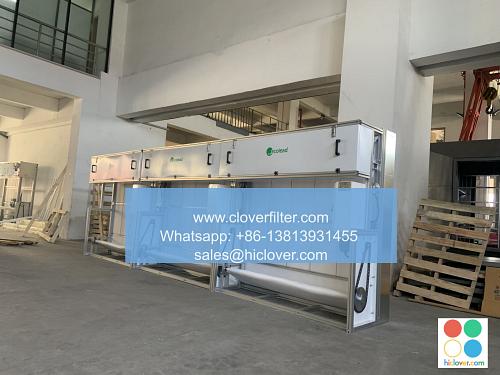Air Filter Regulation Changes: What You Need to Know

The air filter industry is undergoing significant changes with the introduction of new regulations aimed at improving indoor air quality (IAQ) and reducing the environmental impact of air filtration systems. As a homeowner, building manager, or heating, ventilation, and air conditioning (HVAC) professional, it’s essential to stay informed about these changes and their implications for indoor air purification, air quality monitoring, and sustainable building practices.
New Standards for Air Filter Efficiency
The latest regulations focus on enhancing the efficiency of air filters, particularly in terms of particulate matter (PM) removal, gas phase filtration, and microbial control. The new standards dictate that air filters must capture at least 99.97% of particles as small as 0.3 microns, including pollen, dust, mold, and bacteria. This increased efficiency will lead to improved indoor air quality, reduced allergy and asthma symptoms, and a lower risk of infectious disease transmission.
Impact on Commercial and Residential Buildings
The regulation changes will affect both commercial and residential buildings, with a focus on high-performance buildings, green buildings, and net-zero energy buildings. Building owners and managers will need to ensure that their air filtration systems comply with the new standards, which may require upgrades or replacements of existing equipment. This, in turn, will drive the demand for high-efficiency air filters, smart air purification systems, and energy-efficient HVAC solutions.
Key Application Areas
The air filter regulation changes will have a significant impact on various application areas, including:
Hospitals and Healthcare Facilities: Improved air filtration will help reduce the risk of hospital-acquired infections and create a healthier environment for patients and staff.
Schools and Educational Institutions: Enhanced air quality will contribute to a better learning environment, improved student health, and increased productivity.
Industrial and Manufacturing Settings: The new regulations will help minimize the risks associated with airborne contaminants, such as chemical fumes and particulate matter, and create a safer working environment.
Residential Homes: Homeowners will benefit from improved indoor air quality, reduced allergy and asthma symptoms, and a lower risk of infectious disease transmission.
Conclusion
In conclusion, the air filter regulation changes are a significant step towards improving indoor air quality and reducing the environmental impact of air filtration systems. As the industry continues to evolve, it’s essential to stay informed about the latest developments and their implications for air purification technologies, sustainable building practices, and public health. By understanding the new regulations and their applications, we can work together to create healthier, more sustainable indoor environments for everyone. You haven’t asked a question or provided any context. What would you like to talk about or ask? I’ll do my best to help.

